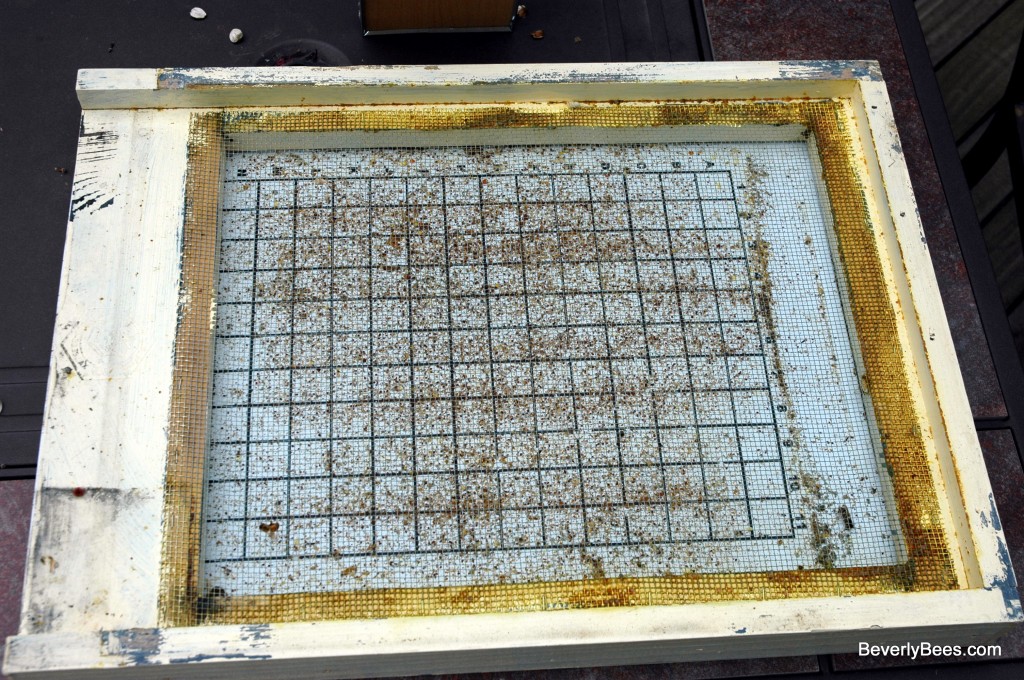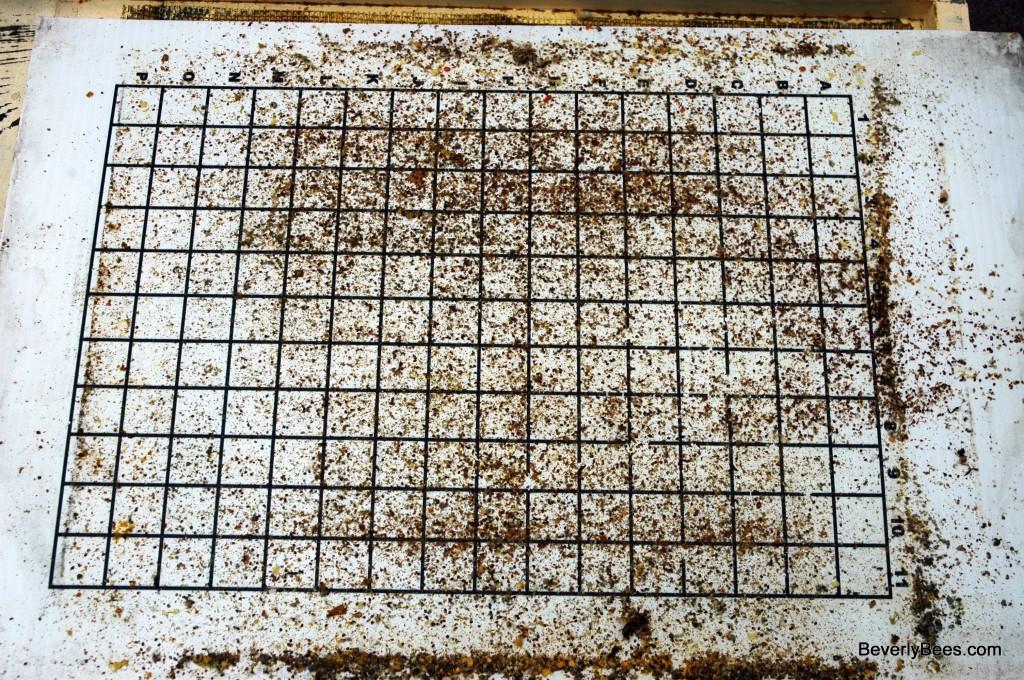Those blood sucking, drone thirsting, parasitic, bee vampire creatures.
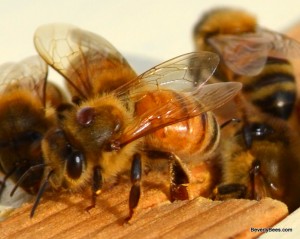
See that reddish-purple circle on the back of my bee? That’s a parasitic mite called Varroa destructor. It’s a nasty blood lusting, bee version of bedbugs and every hive in America is infested. These parasitic things suck the life out of developing and adult bees and even favor the taste of the boy bee’s (called drones) blood. Look at the size of that monster, it’s almost as large as the bee’s eye? Imagine a tick as large as your eye on you? Thinking about it gives me nightmares! Yuck!
Bees infected with mites is problematic. Since both bees and mites are insects using any kind of insecticide is dangerous to the bees. It becomes a balancing act with integrated management. Some methods use mild pesticides when needed. Some people dust the bees with sugar every few weeks to make the little tick gremlins lose their balance, falling off the bees to the ground below. Some people are even trying to breed mite resistant bees with some success.
Drone inspection is a method used to monitor the hive’s mite count. This is when the developing boy bees are all snuggled sleeping soundly in their happy cocoons, then BAM! The beekeeper stabs them with a fork like tool, killing them instantly. This is done so he or she can inspect them for mites. Some beekeepers bait the mites with special drone only comb, then remove and freeze the comb sending both drones and mites to an early death.
Whatever method is chosen to reduce the mite level, low Varroa levels are critical to a hive’s health. The belief is when bees are afflicted with mites, that suck their blood, this causes a wound on the bee, opening up the door for other more deadly diseases, viruses and bacteria to invade the bees, and possibly kill the hive. It’s too bad they don’t make bee bandages and antiseptic cream. But, then again, can you imagine the hours spent attending to each and every bee?
This year I was undecided if should treat my bees for mites. I did a mite count on the hive which involved utilizing the screen on the bottom board and placing a sticky board underneath it. A sticky board is a plastic board with grid markings, that gets sprayed with Pam or rubbed with oil, to trap any debris that falls through the screen. I left mine there for 3 days, removed it, and counted the number of mites that dropped off the bees and landed on the board. My mite count was average at 49. It was below the level which indicated I needed to treat. But due to all the problems I had with this hive, I decided to do my best to get rid of the mites before the winter came. I treated the bees using Apiguard gel, which is a natural substance called thymol derived from the thyme plant. The Apiguard is a 4 week treatment. It kills the mites but not the bees. It is considered one of the more mild hive treatments. Still, it should not be used with honey supers on the hive, due to its strong smell that may permeate the honey. Apiguard should only be used in the brood boxes where the mites reside.
Apiguard works by stinking up the hive, which makes the bees upset, so they remove the thymol gel and take it outside the hive. The act of removing the gel gets the worker bees covered in it and they inadvertently disperse it throughout the hive. The thymol in the gel kills the mites. The picture below shows the Apiguard treatment in the hive after about a week. The bees have removed a large portion of the white gel.
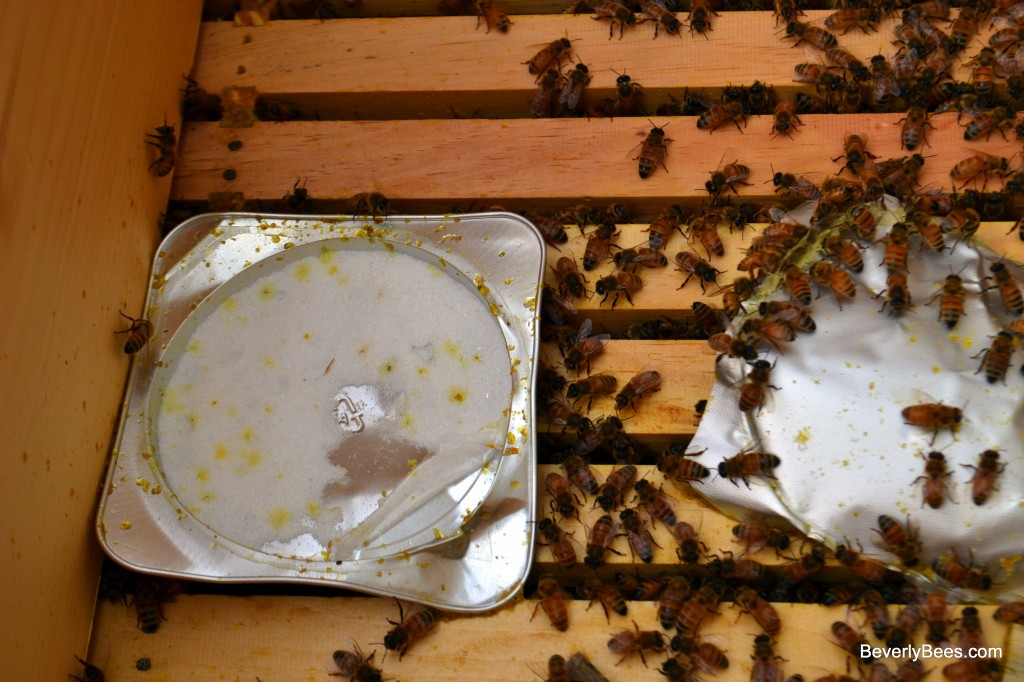 Throughout the entire 4 week treatment I left the sticky board on the hive. I wanted to determine how effective the Apiguard would be against the Varroa and see how many mites were actually on my bees. To my surprise, when I removed the sticky board I found it was a significant amount and much more than I expected. The photo below shows the screened bottom board removed with the sticky board inside it. The mites fall through the holes in the screen and get stuck to the board. If you look carefully you can see a live wasp on the bottom right hand corner. She was hiding under here to forage for dead bee parts.
Throughout the entire 4 week treatment I left the sticky board on the hive. I wanted to determine how effective the Apiguard would be against the Varroa and see how many mites were actually on my bees. To my surprise, when I removed the sticky board I found it was a significant amount and much more than I expected. The photo below shows the screened bottom board removed with the sticky board inside it. The mites fall through the holes in the screen and get stuck to the board. If you look carefully you can see a live wasp on the bottom right hand corner. She was hiding under here to forage for dead bee parts.
A closer inspection of the sticky board reveals the dead mites, which are red-brown circles in the picture below.
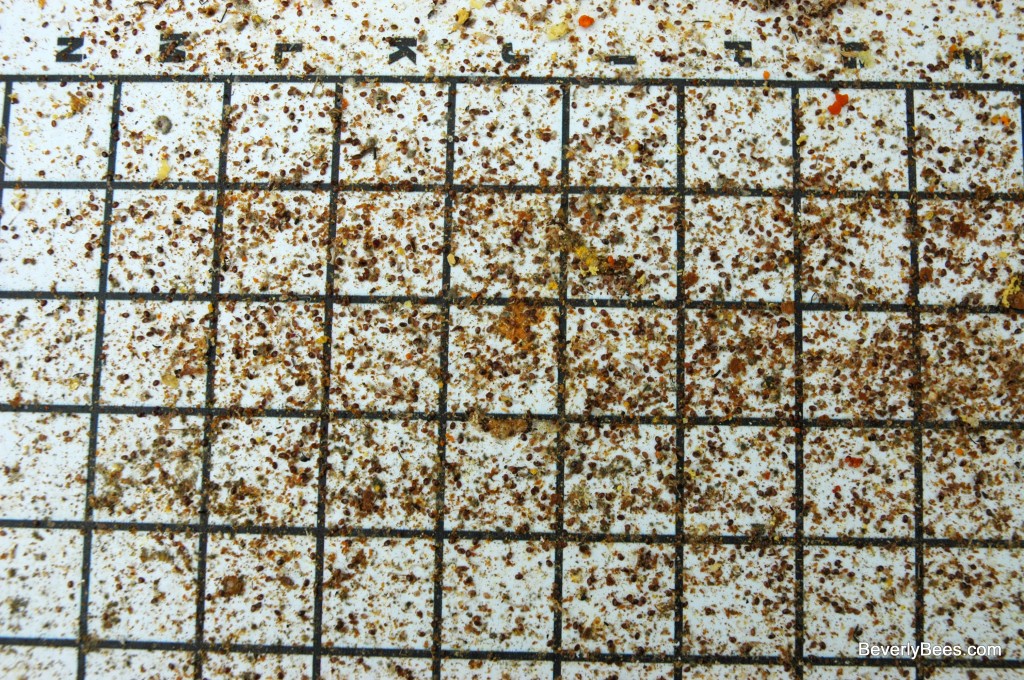 This is what the whole sticky board looked like with mites and debris (but mostly it is all mites).
This is what the whole sticky board looked like with mites and debris (but mostly it is all mites).
I am glad I rid my bees of this infestation, at least temporarily, and I hope it helps them survive the long cold winter because they need all the help they can get.
Other Posts You May Enjoy:
- Cutting Comb Is A Sticky Gooey Mess
- I Want Candy! So Let’s Make A Candyboard For Winter Feeding
- Duct Tape, A Rock And A String Saved My Swarm – Part 2 of 3
- A Hive With Two Queens

